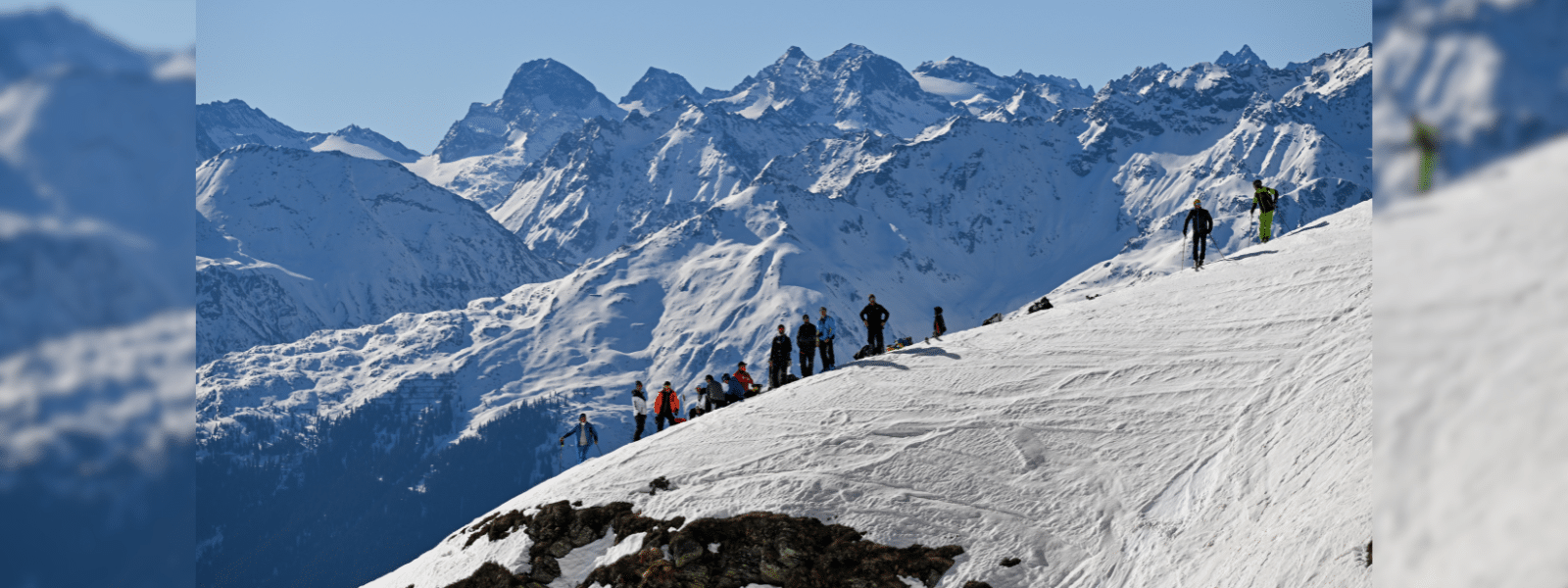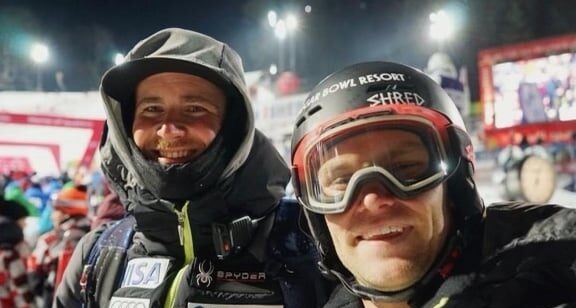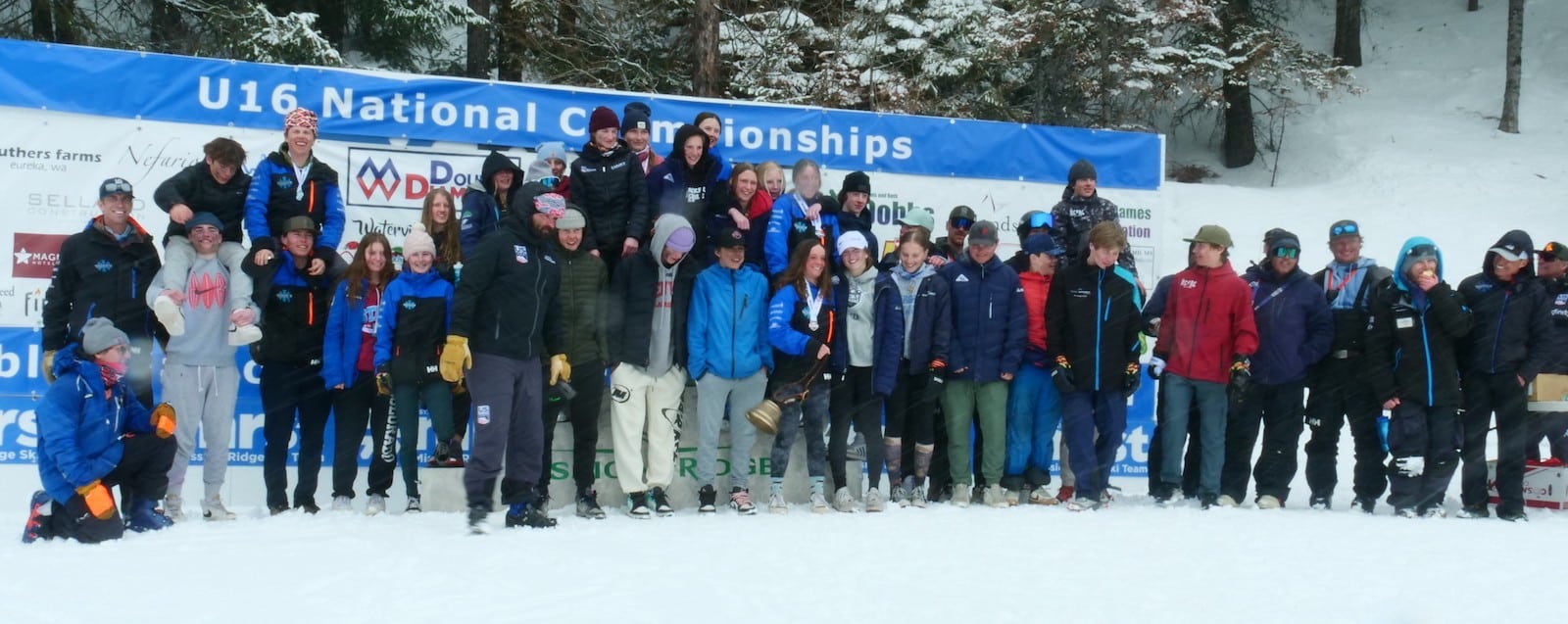How to Race Through College
Part 1: Navigating the nordic NCAA world
It’s that time of year — not only the start of the racing season, but also the deadline for early decision applications. Prospective nordic collegiate skiers are moving in and out of coaches’ offices and around campus nearly as fast as they fly across snow.
But the process is hardly a straight line. Instead, think of colleges with competitive nordic programs as Venn diagram of NCAA divisions, regions, scholarship opportunities and program support. There may not be as much overlap as you’d want — or the overlap may seem to land you at an entirely different place than you expected.
The good news? The opportunities for nordic skiing in the NCAA extend beyond the usual prize-winning schools. With one more qualifying region than in alpine, nordic NCAA schools include 27 institutions with a mixed demographic of Division 1, II, and III schools (though all NCAA ski competitions are classified as Division I).
A breakdown of each region illuminates why NCAA skiing maintains one of the most talented and competitive pools of skiers in the world, in addition to three distinct subsets of collegiate ski culture.
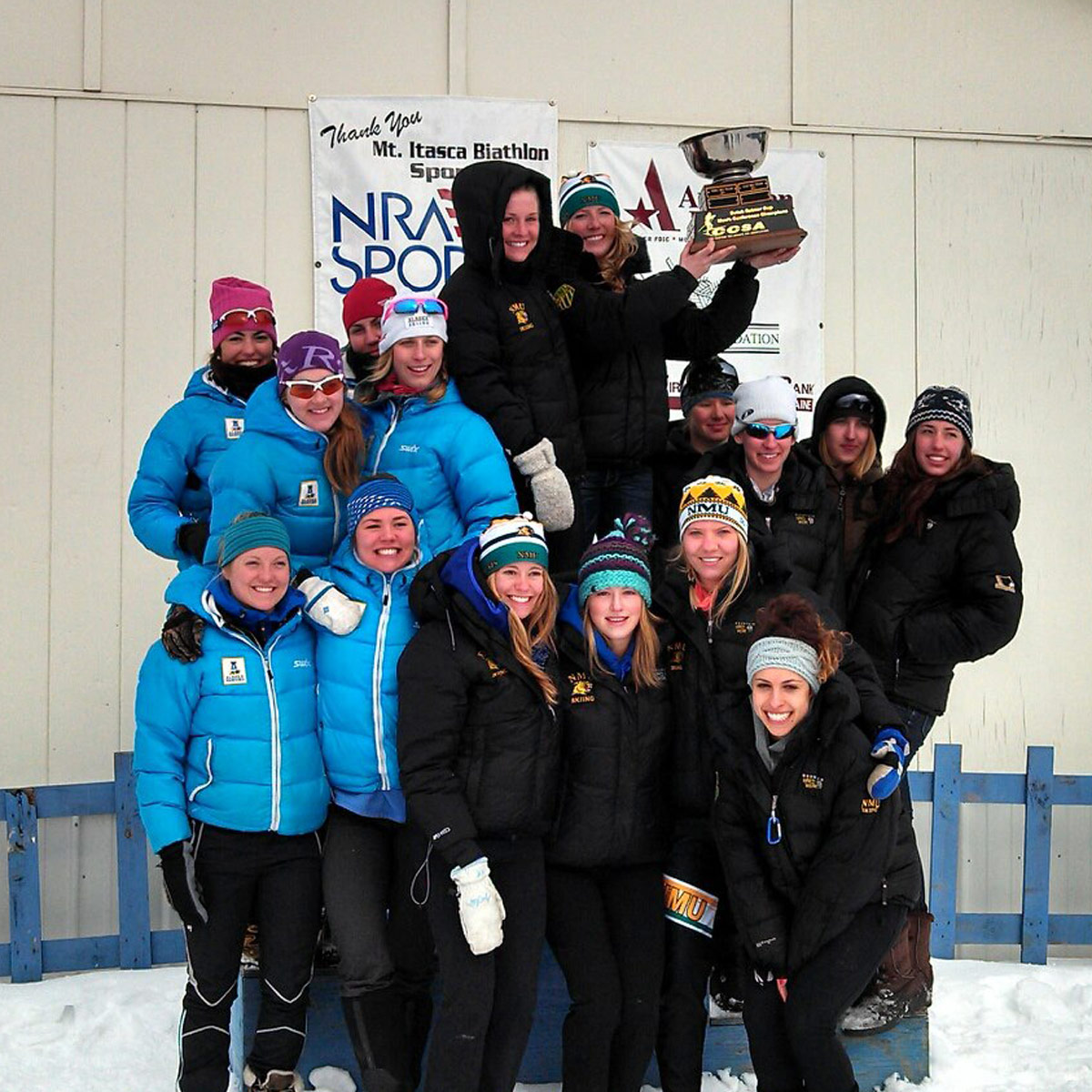 Athletes from NMU, Michigan Tech, and UAF celebrate at the CCSA Regionals. Credit: Jordyn Ross
Athletes from NMU, Michigan Tech, and UAF celebrate at the CCSA Regionals. Credit: Jordyn Ross
The Central Collegiate Ski Association (CCSA)
The CCSA has bounced in and out of national success for years. One women’s team even swept the NCAA podium in 2007 and has had multiple national podiums since. Yet, perhaps because it lacks the successful alpine counterparts of its competitors, it still fights to maintain a reputation as a competitive region.
For Rosie Frankowski, a graduate of Northern Michigan University (NMU) as well as a three-time NCAA All-American and 2014 podium finisher, competed through the CCSA. “It doesn’t have the numbers the East has or the level of support some of the Western Division I schools enjoy but it does come with its strengths,” she says of the CCSA. “The smaller community allows for increased athlete development — you don’t get lost in the crowd.”
The CCSA includes nine schools, all ranging between Division I and III NCAA status. Michigan Tech and NMU are well-known names, but institutions such as University of Alaska Fairbanks (UAF) and St. Scholastica College have also had their fair share of NCAA qualifiers. Last year, in particular, proved successful for CCSA athletes — the kind of success Frankowski attributes to positive team culture in the area.
“By my third year in the region I knew almost every athlete and coach,” she says. “I also think that the CCSA emphasizes sportsmanship and achievement individually, within your team and within the region.”
The CCSA also has the highest concentration of scholarships and team support among Division II schools. Full-time, amateur students with a passing GPA have access to athletic scholarship opportunities from 10 to 100 percent of their tuition. (Although Division II institutions don’t have as many full scholarships available to athletes as a Division I school might, they can still provide excellent facilities and a great deal of financial support.)
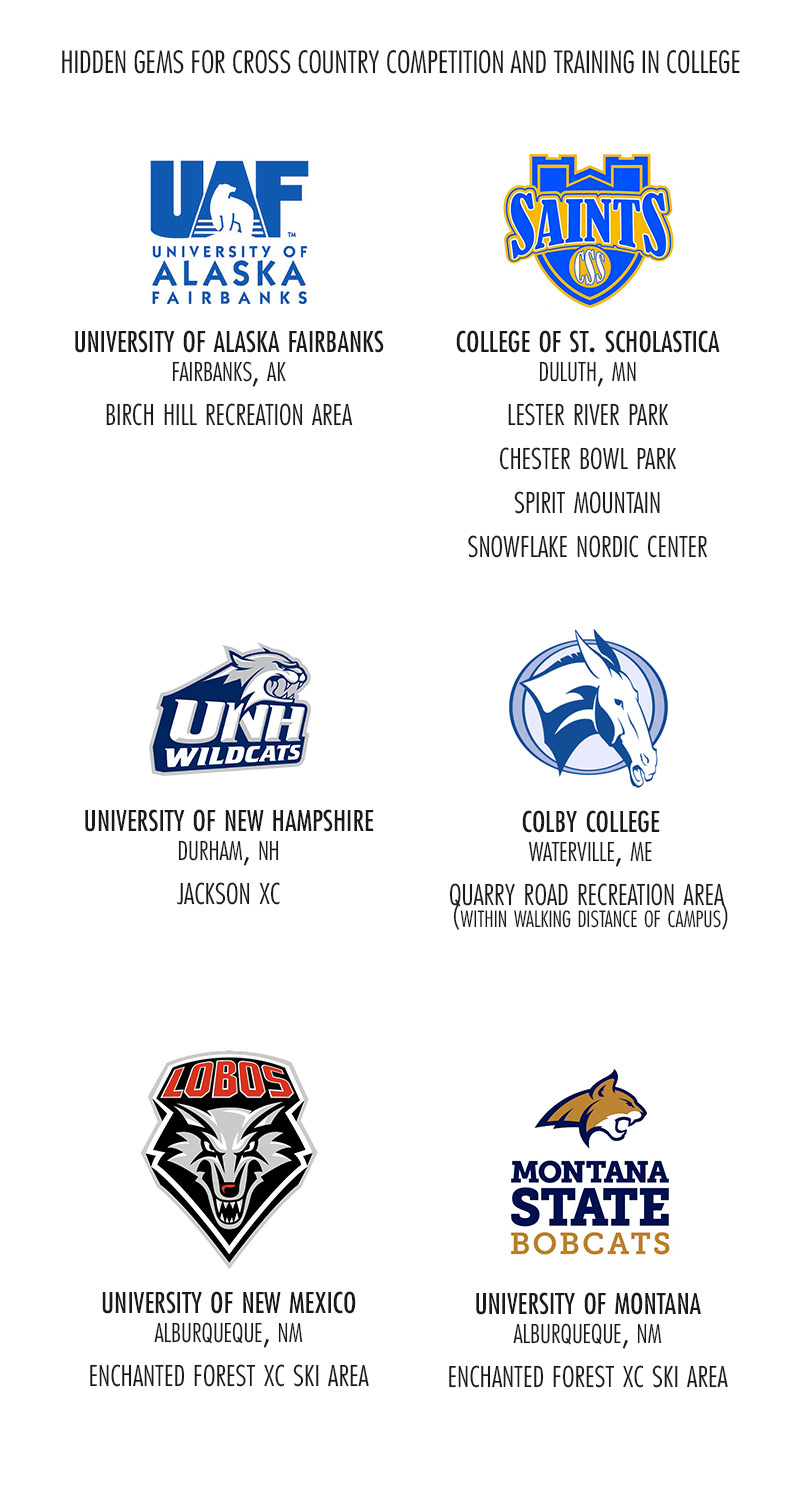
Eastern Intercollegiate Ski Association (EISA)
Hosting 12 competitive schools east of the Mississippi, EISA arguably offers the least amount of financial assistance. Only two schools — the University of New Hampshire and powerhouse University of Vermont — are able to offer athletic scholarships. The rest fall under Division III status, are members of the Northeast Small College Athletic Conference (NESCAC) or are part of the Ivy League.
“The biggest challenge for us is that we do have a much shorter coached season than many of the teams we compete against, and this means having captains’ practice for the first month of school,” says Heather Mooney, a senior captain at Middlebury College, which is a member of NESCAC. She wouldn’t trade those practices for another school, though, as she says Middlebury allows her and her teammates to excel both athletically and academically.
What EISA lacks in athletic scholarship opportunities it makes up for in academic vitality and culture. NESCAC and Ivy League institutions opt not to offer athletic scholarships — instead, providing need-based financial aid — in order to encourage an environment where studies are the primary focus.
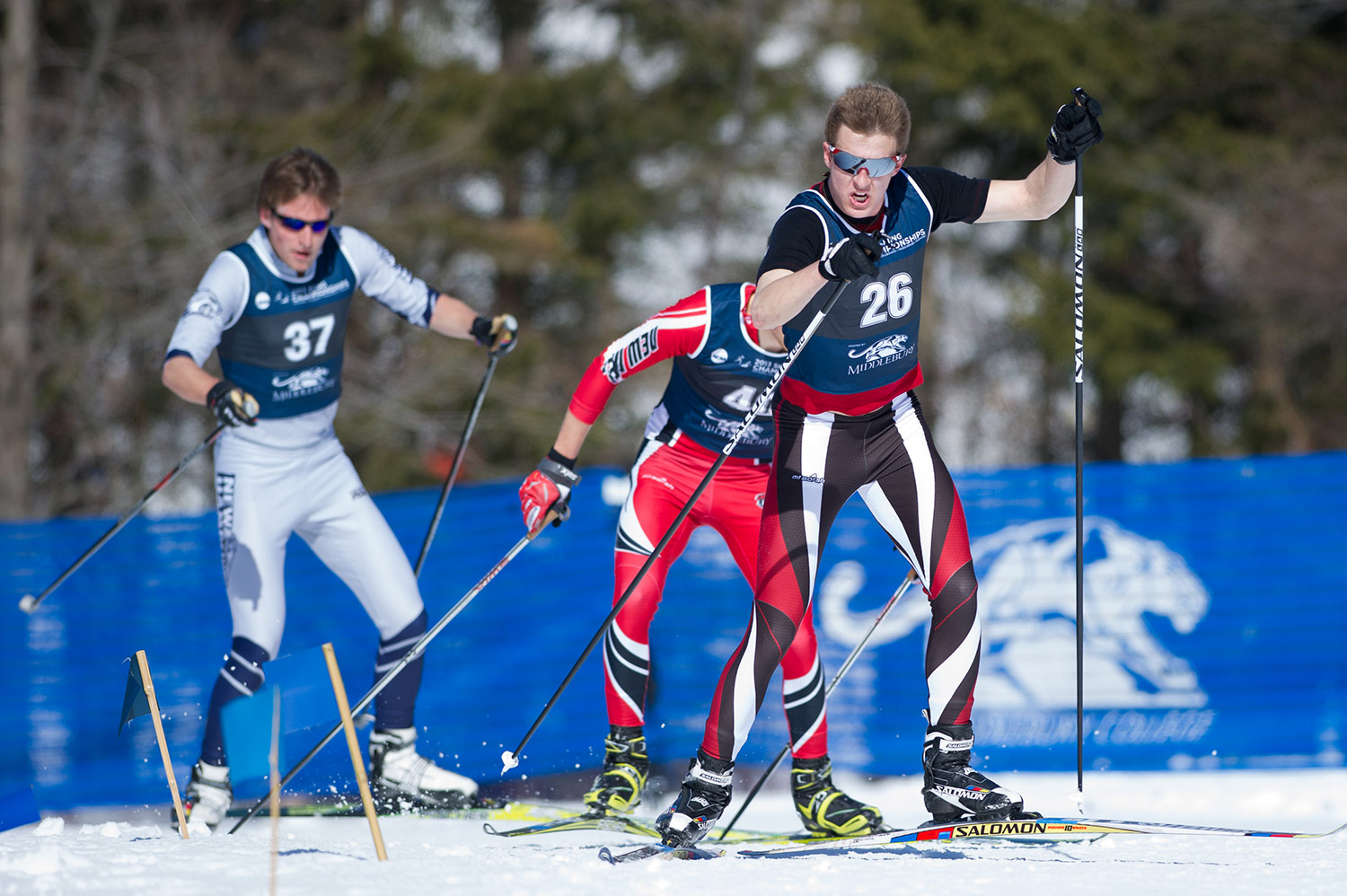 St. Lawrence, New Mexico, and UNH skiers gather together at the 2013 NCAA Championships. Credit: flyingpointroad.com
St. Lawrence, New Mexico, and UNH skiers gather together at the 2013 NCAA Championships. Credit: flyingpointroad.com
“Although we’re a small minority as Division I athletes, we get to live and work in an environment where so many other students are really passionate about what they do,” says Mooney. “While many of them may not be spending 20 hours a week training, many put that time or more into an extracurricular passion that they excel at, and that is very inspiring and humbling.”
Nordic skiers are naturally good at time management, says Patrick Caldwell, a U.S. Ski Team athlete and Dartmouth College student who has taken advantage of the institution’s quarter system to pursue high-level training and racing in and out of the college circuit. “Of course there are time crunches and stressful situations,” he says, “but for the most part, if you want to be able to train, sleep and do well academically, you have to split your time wisely to survive.”
To balance academic rigor, EISA maintains the most racing opportunities with the least amount of travel. Every year, teams can count on attending UVM, Dartmouth and Middlebury Carnivals — which are central to the region — while travel to Colby, Bates, UNH, St. Lawrence University and Williams College changes on a yearly rotation.
Rocky Mountain Intercollegiate Association (RMISA)
RMISA is most famous for three of its standout schools: the University of Colorado, University of Utah and University of Denver. The region has taken home 52 of the 59 NCAA championship titles, many coming from other western universities.
RMISA is the smallest region in the NCAA, giving each of its six schools the chance to qualify an entire three-person team to NCAA Championships. Because of its high proportion of Division I schools, RMISA also has the greatest access to high funding and top-notch athletic facilities.
But athletes are often away from those facilities, as RMISA’s area spans from New Mexico to Steamboat Springs, Colo., all the way up to Anchorage, Alaska.
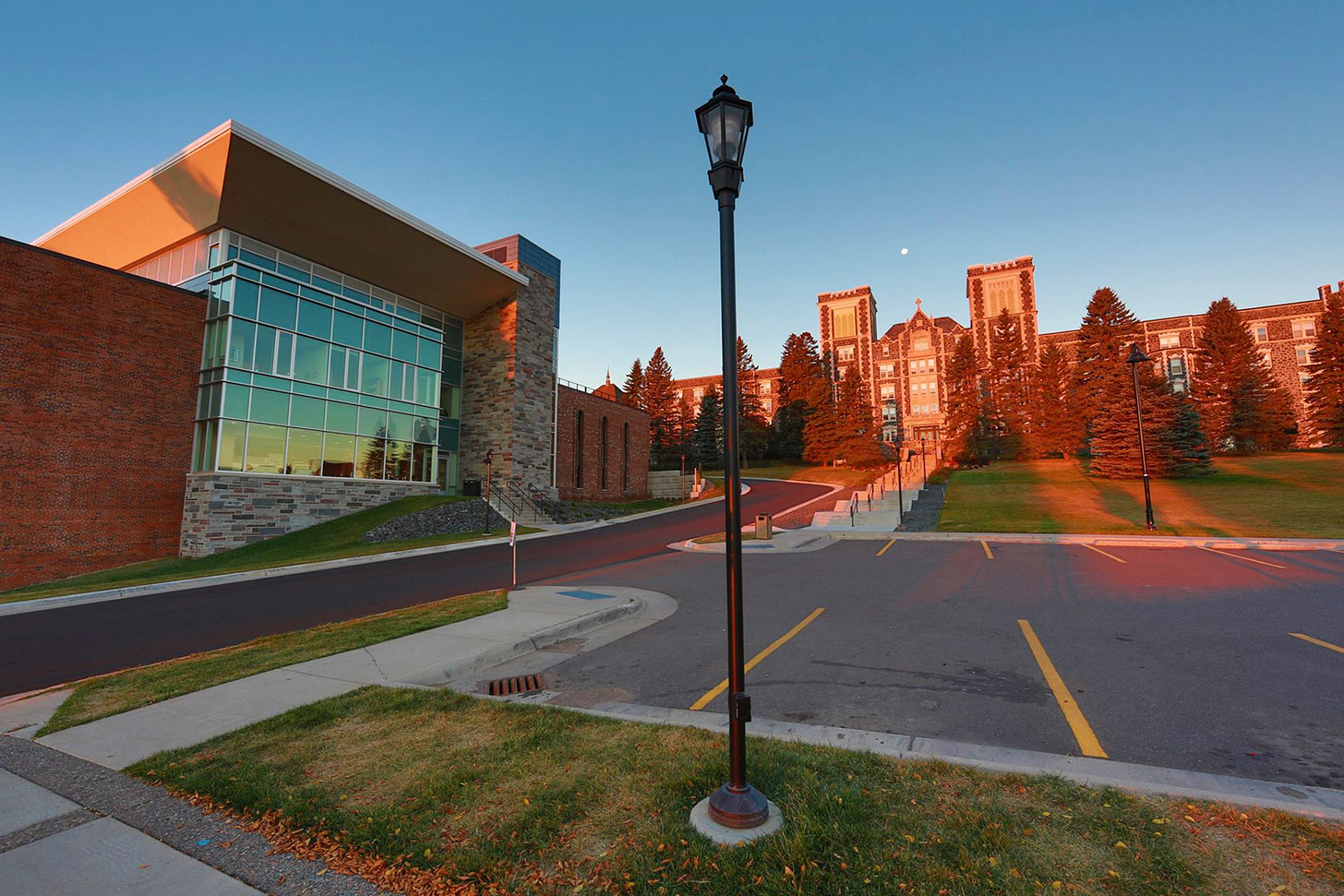 The College of St. Scholastica in Minnesota has a topnotch nordic training center. Credit: CSS
The College of St. Scholastica in Minnesota has a topnotch nordic training center. Credit: CSS
“This year we’re traveling a lot,” admits Sawyer Kessleheim, a junior at Montana State University. “We will fly to Colorado for a weekend of races and then drive to New Mexico straight from Denver where we will race the following weekend.” Kessleheim adds that communication with professors and resources from the college makes the travel schedule manageable from an academic standpoint, despite athletes having to miss weeks of school at a time.
The circuit changes every year and doesn’t always include travel to Alaska or New Mexico. Also, when U.S. Nationals are in the East, the region schedules races to include meets within or around the competition.
RMISA has a high population of international athletes. Current rosters show that slightly more than half of the 73 RMISA athletes are international, which is actually a smaller margin than in years past. “Hard work can lead to a scholarship, especially if you’re an American,” says Mary Rose, a 2013 CU graduate who was awarded scholarship opportunities throughout her college career.
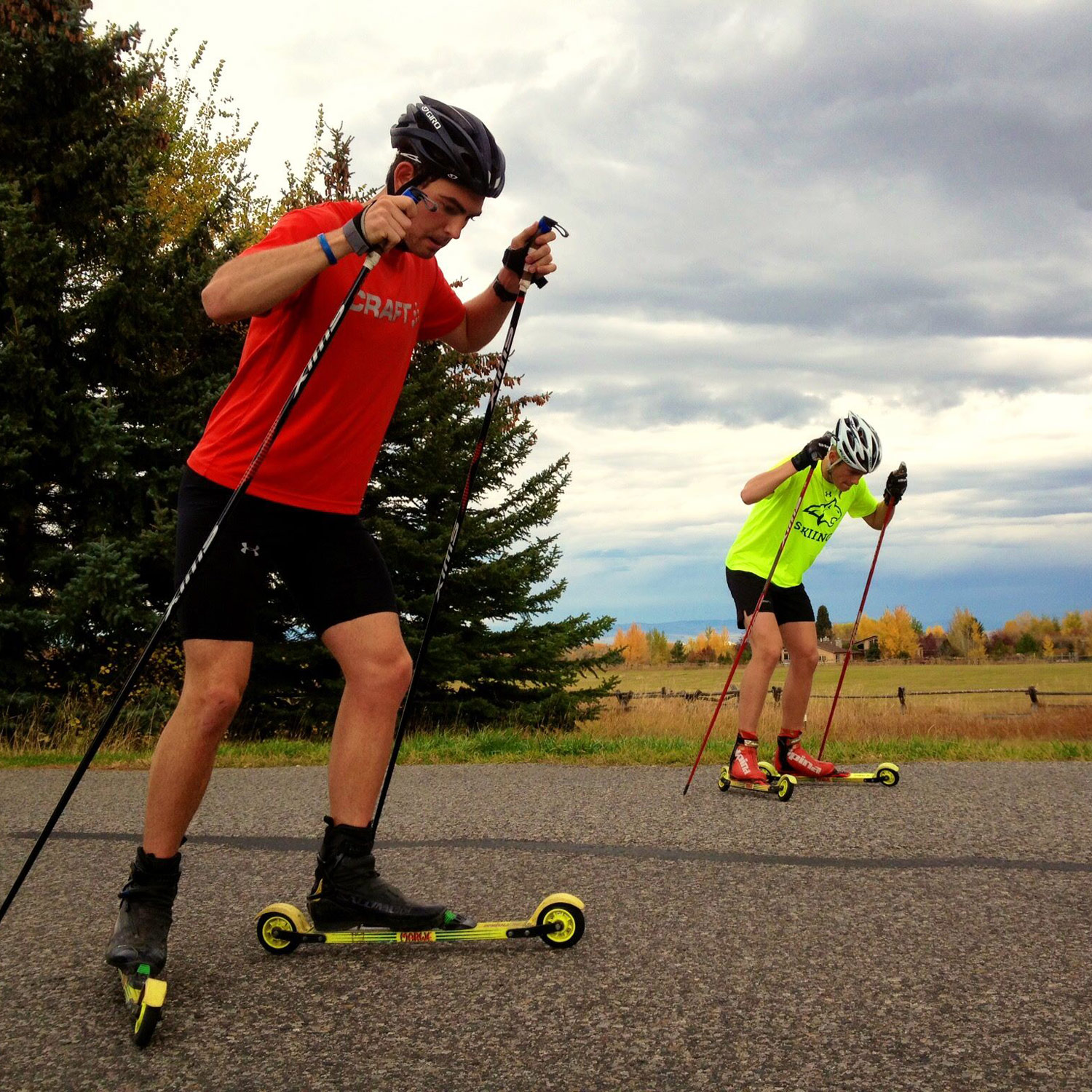 Members of the Montana State University Ski Team head out for a fall rollerski. Credit: MSU Ski Team
Members of the Montana State University Ski Team head out for a fall rollerski. Credit: MSU Ski Team
Indeed, nordic athletes all across the country share that sentiment: work hard in a place you love, and results will find themselves from there.
Next up in this three-part series: NCAA opportunities for alpine athletes.
